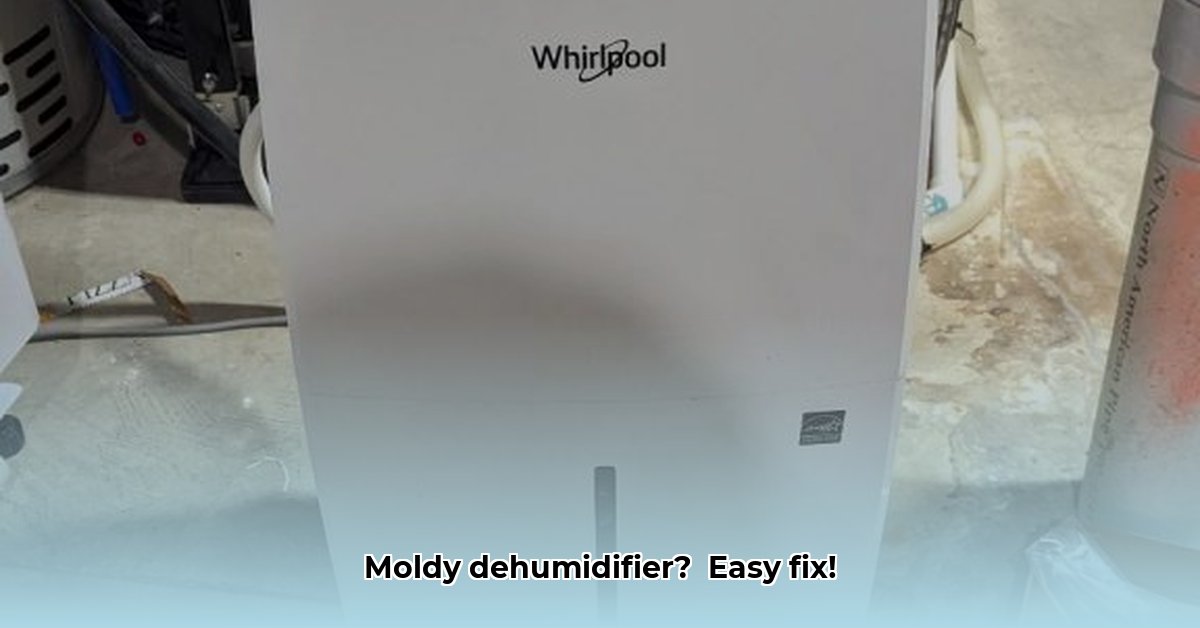A musty smell coming from your dehumidifier? Suspicious dark spots in the water tank? You might have a mold problem. While dehumidifiers dry the air, ironically, they can become moldy without regular cleaning. This guide provides easy-to-follow instructions for cleaning your dehumidifier, preventing mold growth, and understanding the associated health risks.
Why Mold Grows in Dehumidifiers
Dehumidifiers, designed to combat excess moisture, can inadvertently create ideal conditions for mold. They extract water from the air, but this collected moisture, combined with dust and other airborne particles, can create a perfect breeding ground for mold, especially if not properly maintained. Think of it like a damp sponge left sitting out – a prime location for mold to flourish.
The Science of Mold and Dehumidifiers
Mold thrives in damp, dark environments, and the inside of a dehumidifier, especially a neglected one, offers just that. Stagnant water in the reservoir, a dirty filter, and the humid air drawn into the unit all contribute to mold growth. This is similar to leaving a wet towel crumpled in a corner – a recipe for mold.
Health Risks of Dehumidifier Mold
Mold isn’t just unsightly; it’s a potential health hazard. A moldy dehumidifier can circulate spores throughout your home, triggering allergies, asthma attacks, and other respiratory issues, especially in sensitive individuals. For those with weakened immune systems, the risks can be even more serious.
Cleaning Your Dehumidifier: A Step-by-Step Guide
Ready to banish mold from your dehumidifier? Follow these simple steps:
-
Safety First: Unplug the dehumidifier. Wear gloves and a mask to minimize exposure to mold spores. Open a window for ventilation.
-
Empty the Water Tank: Pour out any standing water and wash the tank thoroughly with warm, soapy water.
-
Vinegar Power: Disinfect the tank with a 50/50 solution of white vinegar and water, letting it soak for about an hour for stubborn mold. Scrub with a brush, rinse thoroughly, and allow to air dry completely. Vinegar’s natural acidity is highly effective against mold and mildew.
-
Filter Care: Clean or replace the filter. Washable filters should be washed with soapy water and dried completely. Replace disposable filters as needed.
-
Coil Cleaning (Advanced): Use a soft brush and soapy water to gently clean the coils. Some dehumidifiers require no-rinse antimicrobial coil cleaners. Consult your owner’s manual before cleaning the coils as this may void your warranty. Rinse thoroughly and ensure they’re completely dry before reassembling the unit.
-
Exterior Wipe-Down: Use antibacterial wipes or a diluted bleach solution (1 part bleach to 10 parts water) to clean all exterior surfaces.
-
Dry and Reassemble: Ensure all parts are completely dry before plugging the dehumidifier back in.
Preventing Mold: Proactive Maintenance
Preventing mold is easier than removing it. Follow these tips to keep your dehumidifier mold-free:
- Empty the Reservoir Frequently: Empty the water tank daily or every other day.
- Regular Filter Maintenance: Clean or replace filters every 1-3 months, depending on usage and air quality.
- Descale Regularly: Use a vinegar and water solution every few months to remove mineral deposits that can harbor mold.
- Optimal Humidity: Maintain indoor humidity below 60%. Employ exhaust fans in bathrooms and kitchens to aid ventilation.
- Proper Storage: Store the dehumidifier in a clean, dry location when not in use.
Choosing the Right Cleaning Solution
| Cleaning Solution | Best For | Precautions |
|---|---|---|
| Soap and Water | General Cleaning | Mild and generally safe. |
| White Vinegar Solution | Disinfecting, Descaling | Eco-friendly and effective against mold. |
| Diluted Bleach Solution | Heavy Mold Infestations | Use in well-ventilated areas; wear gloves. |
| Commercial Cleaners | Specific Cleaning Needs | Follow manufacturer’s instructions carefully. |
Some essential oils, like tea tree and lavender, have shown antifungal properties in some studies, and could be used in conjunction with regular cleaning methods. However, more research is needed to determine their efficacy in preventing mold growth in dehumidifiers.
Troubleshooting Persistent Mold
If mold persists despite regular cleaning, there might be a deeper issue, such as trapped moisture within the unit or unseen damage. Consult a qualified appliance repair technician for diagnosis and solutions.
When to Replace Your Dehumidifier
If mold keeps recurring despite thorough cleaning or if the infestation is severe, it might be more cost-effective and healthier to replace the dehumidifier.
By following these guidelines and staying proactive with maintenance, you can ensure a mold-free dehumidifier and a healthier home environment. While these practices are generally effective, research on mold prevention is ongoing, and new strategies may emerge. Staying informed about the latest best practices is always recommended.
- How to Stop Apps From Running in the Background to Boost Your - December 1, 2025
- How To Move Apps On Your Droid For Better Organization - November 30, 2025
- How to Move Apps on Android for Better Organization - November 29, 2025










